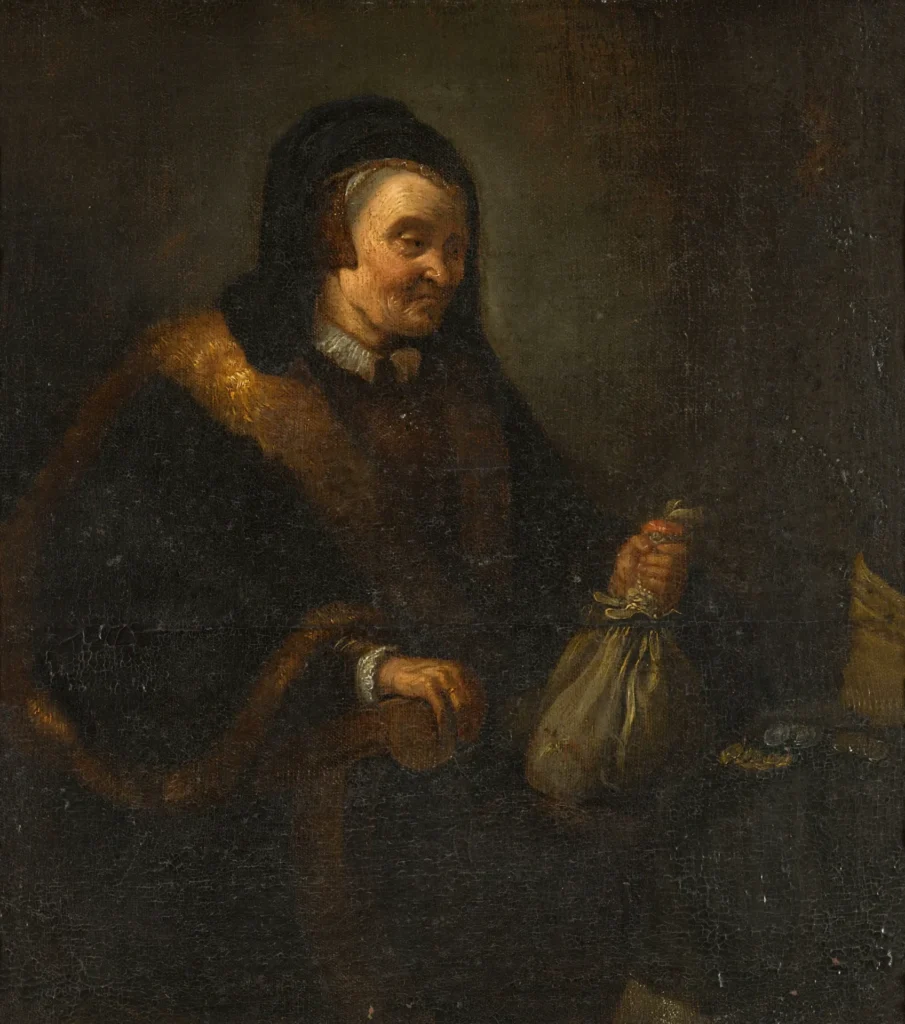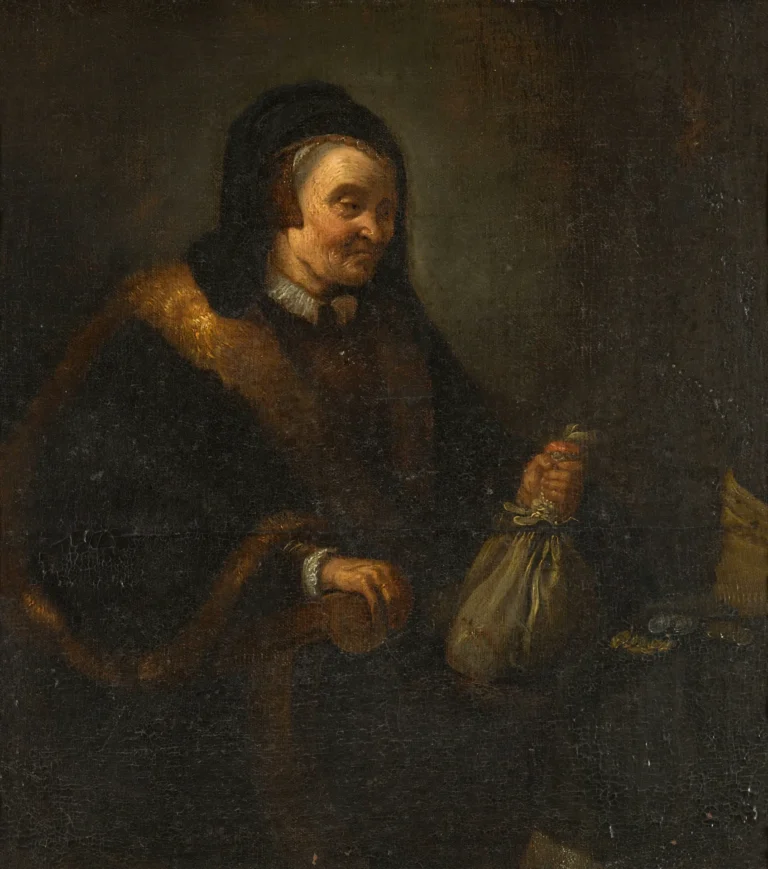An Old Woman with a Purse And Coins
This intriguing painting depicts an elderly woman deeply engaged in the act of counting coins from her purse, a moment that reflects a combination of focus and introspection. The artwork showcases Rembrandt's exceptional talent for manipulating light and shadow, enhancing the emotional depth of the subject. Although widely attributed to Rembrandt, some debate exists regarding its authorship, adding an additional layer of intrigue to this piece. Created in the vibrant 1630s, it encapsulates the themes of quotidian life prevalent in Dutch Golden Age art.
1630s
About the Artwork
The narrative of An Old Woman with a Purse And Coins revolves around the intersection of daily life and artistic mastery in the 17th century. The painting captures a transient moment, highlighting a common activity that many can relate to: the act of counting one's fortunes. The elderly woman’s contemplative expression evokes a sense of authenticity, inviting viewers to ponder her thoughts. The ongoing discourse regarding the painting's authorship—whether it stems directly from Rembrandt or his workshop—adds to its mystery. This ambiguity encourages art enthusiasts to explore the dynamic nature of attribution during the flourishing Dutch Golden Age, where many artists, including apprentices, contributed to a shared style.
Did You Know
Rembrandt was renowned for his innovative use of chiaroscuro, which is stark contrast between light and dark, giving his paintings a three-dimensional quality that emphasizes emotional undertones.
The painting represents the peak of the Dutch Golden Age in art, a period marked by a surge in creativity and skill, particularly in genre painting that depicts everyday life and the common people.
The art world continues to discuss whether the painting is genuinely Rembrandt’s work or that of his studio, which highlights the collaborative nature of many works produced during this era.










